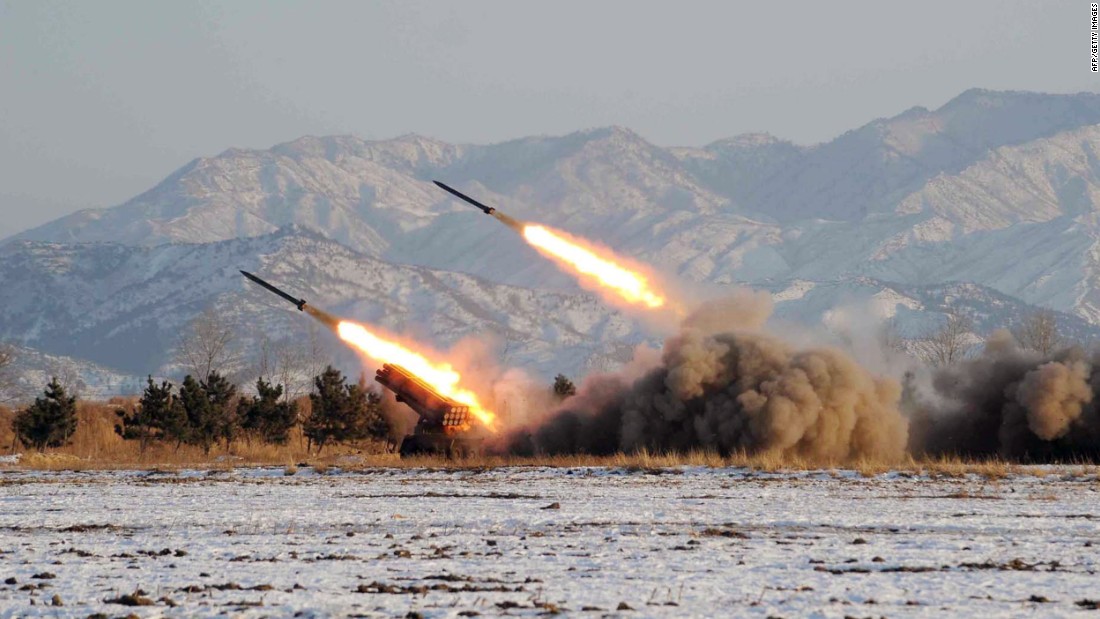
It has been fifteen years since North Korea declared it was going to develop nuclear weapons. A variety of international efforts to get North Korea to abandon its nuclear and missile program, including the Six Party Talks, have failed, and all Security Council resolutions concerning North Korea’s nuclear and missile tests have been adopted but achieved little. With the sixth nuclear test on 3 September and the latest intercontinental ballistic missile test on 29 November, the security situation on the Korean Peninsula is getting tenser and tenser and the need to denuclearize North Korea is becoming increasingly urgent. To safeguard the international nonproliferation system, it is high time for the international community to set a timetable for the denuclearization of North Korea.
North Korea’s Nuclear and Missile Tests Pose Ever-Increasing Threats
North Korea began its nuclear tests in 2006 and has conducted six nuclear tests since. Each test saw an increase in yield and capabilities. The yield of the first nuclear test was 0.7-2 kt. The yield of the sixth nuclear test was 70-280kt - 100-400 times higher.
North Korea began to conduct ballistic missile tests in 1998 and dozens of tests have been conducted since, with 18 and 20 tests in 2016 and 2017 respectively. On 31 August 1998, North Korea fired its first ballistic missile, the Taepodong-1, which was a three-stage technology demonstrator, derived from the Scud rocket, with a range of 2,000 km. On 29 November 2017, North Korea launched a Hwasong-15 missile without any airspace or maritime safety notifications, which reached an altitude of 4,475 km and flew a linear distance of 950 km before coming down, with a potential range of 13,000 km, 6.5 times farther than that of the Taepodong-1. North Korean Hwasong-15 missiles are now capable of striking anywhere in the United States. If North Korea puts nuclear warheads on Hwasong-15s, they will pose a great threat to the US and its allies.
It is clear that North Korea is moving very close to the threshold of nuclear miniaturization. Once it crosses the threshold, no country or organization can force North Korea to abandon its nuclear weapons.
The Security Council has adopted 18 resolutions relating to North Korea’s nuclear and missile programs. North Korea has defied all these resolutions and continued its missile and nuclear tests, showing complete disregard for the united stance of the international community, and should be sternly punished.
Consensus on Denuclearization of North Korea Has Been Reached
China holds that the Korean nuclear issue should be solved through dialogue and negotiation and no country would accept a nuclear-armed North Korea. To stop things from getting worse, China has proposed "double suspension" ¾ North Korea suspending nuclear-related activities in return for the US pausing military drills with South Korea and the "dual track approach" ¾ advancing denuclearization and peace building at the same time, leading ultimately to the replacement of the Armistice Agreement with a peace treaty.
UN Secretary-General António Guterres and Under-Secretary-General Jeffrey Feltman have appealed for de-escalation and full implementation of relevant Security Council resolutions and emphasized the need for a political solution during the Secretary-General’s meeting with Ri Yong Ho, North Korea’s Minister for Foreign Affairs.
President Donald Trump affirmed his commitment to a complete, verifiable, and permanent denuclearization of the Korean Peninsula while visiting China and remarked that “it makes sense for North Korea to come to the table and to make a deal that's good for the people of North Korea and the people of the world.” Secretary of State Rex Tillerson said the US did not seek regime change, a collapse of the Kim regime, an accelerated reunification of the Korean peninsula, or an excuse to send its military north of the 38th Parallel. These remarks show that the US wants a peaceful solution to the North Korean nuclear issue.
President Moon Jae-in of South Korea said he had agreed with Trump to “resolve North Korean nuclear issue in a peaceful manner and bring permanent peace to the Korean Peninsula” at a joint press conference with the US president.
President Vladimir Putin of Russia and Prime Minister Shinzo Abe of Japan also made similar remarks at different occasions. All this shows that countries agree on the need to denuclearize North Korea, they just disagree about tactics.
It’s Time to Set a Timetable for the Denuclearization of North Korea
The UN and the international community should coordinate policy and efforts to denuclearize North Korea within three years. The process could be as follows:
From January to March 2018, the US and South Korea should announce a freeze of joint military exercises in return for North Korea announcing a freeze of nuclear and missile tests. From April to June, the six parties – China, the US, Russia, North Korea, South Korea, and Japan – should resume dialogue to prepare peace treaty negotiations between North Korea, South Korea, China, and the US. From July to September, they should confirm the timetable for denuclearization and peace treaty negotiation and commence related negotiations. From October to December, they should sign a framework agreement on denuclearization and peace treaty.
From January to June 2019, they should verify implementation of the framework agreement, North Korea should announce a freeze of operating nuclear facilities, the four parties should agree to concrete provisions on denuclearization, peace, and aid to North Korea. From July to December North Korea should close all nuclear facilities and accept international verification, and the international community should send aid to North Korea.
From January to June 2020, North Korea should begin to dismantle its nuclear facilities, and the denuclearization agreement and the peace treaty should be finalized. From July to December, North Korea should finish dismantling its nuclear facilities, and should accept international verification, and the four parties should sign the denuclearization agreement and peace treaty, and repeal the Armistice Agreement, thus realizing the denuclearization of North Korea and permanent peace on the Korean Peninsula.
If North Korea refuses to participate in the negotiations on denuclearization, or if it obstructs them, the international community will have the right to employ military force to denuclearize North Korea.

